
60 years of SG: discovering, laughing and thinking
Studium Generale won't be doing a lot of looking back during next week's big 24/60 event; the focus will be on showing what they do and what they stand for. All the more reason then for Cursor to review SG, which this year is celebrating sixty years. We are doing this with various of its staff members, past and present, who have entertaining and remarkable anecdotes to share. Like the one about the security officer who grabbed a street performer by the collar, Annie M.G. Schmidt being given the fright of her life by a stuffed sheep, and 600 people eager to see whether a man can hover a meter above the ground.
Spending hours listening to an LP of St Matthew Passion. It is hardly conceivable today, but in the 1960s Studium Generale could easily fill an entire program with this ‘activity’. “That record player would have to be a hip DJ today,” says SG chief Lucas Asselbergs, drawing a comparison. By which he means that you have to work a lot harder to hold the attention of the student anno 2018 than you did sixty years ago.
“Our remit has not changed in all these years, though the form has,” says Asselbergs, who has been the head of Studium Generale since 2009, having worked there from 1991 to 1998 as a program-maker. That remit is to foster the social and cultural education of students and develop their ethical sense.
“For us it's fun to get people interested in a diverse range of subjects and to move with the times. And we keep on managing it, though it means continually moving our chairs to stay in the sunshine. These days thanks to the link with USE all TU/e students come across our programs at least five times. That's enough to convince them. It is often a sense of trepidation that is holding them back, after that they are keen to come more often.”
Club house
Not only has the programming changed over the years, so have the possibilities offered by the campus. “There are more people on the TU/e grounds, decision-making more often involves consultation or more groups having their say and, an important point, there are fewer spare rooms. A ramble through the basements of the Main building and various laboratories, like the one we did for the lustrum performance TU Odyssey in 2011, would be pretty tricky these days. In Luna, where we now hold our performances, there is a lively culture, but we are still very much in the startup phase there.”
Another change: the active role that students can play. Corine Bolwerk, SG program-maker since 1988, explains: “In the past we were a club house of sorts. It was their second home. Now it is harder to find students who are prepared to commit for a longer stretch.”
SG has always felt the support of the TU/e administration, tells Asselbergs: “We've covered various sensitive topics down through the years. A few students were offended, for example, when we had a cartoon of the Ayatollah in our program guide. We talked that over thoroughly with them. A lecture about pedophilia, to which we had invited a pedophile, caused a lot of commotion. Ultimately everyone thought the program was nicely balanced. And we had a single complaint when a man was suspended in the Auditorium with only an iPhone covering his crotch. But we have always enjoyed a great deal of freedom.”
Sixty years of SG brings back plenty of memories for various members of its staff, present and former. We recorded several surprising anecdotes.
The man who attempted to hover a meter above the ground
Sami Faltas, SG chief from 1988 to 1994, still remembers well the remarkable performance in 1990: “A lecturer told me that he was a member of the Skepsis Foundation, which combats superstition and quackery. A young man from the Transcendental Meditation movement had claimed that he could fly with the aid of TM, and the skeptic offered him 10,000 Dutch guilders if he could demonstrate that under controlled conditions.”
That lecturer, that was Jan Willem Nienhuys. He taught in the early 1990s at the Department of Mathematics and Computer Science, and at that time he was actively involved in the Skepsis Foundation. The Foundation placed an appeal in the Eindhovens Dagblad, which had previously published an article about the Transcendental Meditation movement, for someone to give a demonstration.
Nienhuys: “Frans van de Logt answered the call. He was supposed to hover for 1 second at least 1 meter off the ground and if he managed to do so we would give him 10,000 Dutch guilders. I had withdrawn this money from the bank in advance and let it be seen prior to the test. I have to say my wife was worried that TU/e's measuring technique would prove insufficient and we would lose the money.
The Grote Zaal (now known as the Blauwe Zaal, ed.) was bursting at the seams, people were standing on other's people's shoulders to get a view. The audience numbered about six hundred. It is remarkable, isn't it, that so many technical students came to see whether the guy could do it.
Amazement, introduction and enjoyment
Van de Logt started to meditate, made three little hops and received modest applause. Later, when the video footage was examined, it was proved that when making his best leap he got no higher than 20 centimeters off the ground for roughly 0.4 seconds. What annoyed me was that it turned out to be a promotional stunt. Van de Logt wanted to advertise his own club.”
Nonetheless, recollecting all this, Sami Faltas calls it a successful event: “The three elements of our motto came to fruition: amazement, introduction and enjoyment.”
Paul de Leeuw performs totally unprepared
“Paul de Leeuw was up and coming in 1990, people thought he was terribly funny.” Speaking is Joost Rekers, SG staffer from 1982 to 1994.
“Paul de Leeuw's agent gave me the chance to speak to him after a show in the Park Theater and to brief him about his performance at TU/e. We always looked for something big to open the SG year with.
I asked him whether he needed anything for his performance. A piano maybe? But no, he didn't need anything. I felt satisfied with that and let it rest. Besides, I rather looked up to him and thought ‘whatever he can do on TV, he'll certainly be able do in front of an audience’. When we were having a coffee together right before his performance, it turned out he hadn't prepared anything. He became rather nervous when he saw how much interest there was.
Not amused
He improvised, and one of the things he did during the performance was make fun of the Buck affaire, he even called Buck a 'pussy-licking beaver'. That really didn't go down well with the Executive Board. Half of the students couldn't resist laughing, but a lot of people were not happy with the performance.
Afterwards letters were published in Cursor from people who found De Leeuw too coarse. I later responded to them and defended the show, which I should not have done. It simply wasn't a good performance. After the show I went for a drink in the city with Paul de Leeuw and we went to try on spectacles. I don't think he thought it was a success, but he kept mum. He immediately turned the conversation to other topics.”
Annie M.G. Schmidt startled by stuffed sheep
Another anecdote from Joost Rekers. “My first job was doing the layout of the information booklets, and as a rule I thought the programming was a bit boring. Things have changed since then. I once interviewed two bodybuilders who also gave a demonstration. And various Dutch celebrities, such as Henk Schiffmacher and Tom Egbers.
I have made all kinds of stage sets, like the one used for a performance by Annie M.G. Schmidt. She came to the university on three occasions for our annual series Autobiographical and we made a lounge for her in 1950s style. Annie M.G. Schmidt sat in an armchair, next to which we had placed a stuffed sheep - a reference to her poems about the sheep named Veronica. Her eyesight was poor and she didn't notice the animal at all. Halfway through the interview she happened to touch it and when she looked at it up close she had the fright of her life. The audience found it hilarious.”
SG chief Sami Faltas talks about this period: “To captive the students' interest, we not only looked for exciting themes and entertaining speakers or performers, but also aimed to design the events in an attractive way. We started using stage sets and introductory music and from then on events that simply involved three boring men sat at a table covered in green baize talking their heads off were banned. When we picked speakers we paid just as much attention to the presentation as to the content. This formula worked well and also inspired some other SGs.”
Buying up umbrellas
For a performance on a rainy day, September 15, 2000, SG staff hurried into the city center to buy up all the umbrellas in HEMA. The film Faust was due to be screened, but not in the cinema. The projection screen was hung on the exterior of the chemistry building (T-Hoog, currently Vertigo), spanning five floors. There was live music. “The ticking of the rain on your umbrella added to the grim atmosphere of the film,” recalls Corine Bolwerk.
Erotic texts going down the wrong way
For SG, author Thomas van Aalten wrote a thriller in ten installments that was set on the campus. The first nine parts were supposed to be printed on placemats and the denouement was going to be revealed during a literary evening in Gaslab.
The Volkskrant wrote on September 10, 2002: But right from the first installment things went awry. 'The text went down the wrong way with many an unsuspecting diner,' says university spokesperson Cees van Keulen. In the story, Professor Fanton watches the attractive, young TU student Maril walk away: 'He peers out from a crack between the dusty green hessian curtains and mumbles to himself: '”Dumb, dumb girl. What a pity you've got such a delicious juicy cunt.” He kneads his genitals and turns back to his work room.’
The complaints received by the Executive Board ensured that the serial no longer appeared on placemats but had to be requested by mail. SG regarded the placemats as a new concept that involved some risk. “We're learning from this,” said the head of Studium Generale, Maarten Pieterson in the Volkskrant newspaper.
Thomas van Aalten recalls that he felt no anger when he was called about stopping the project. “I might have felt it was an affront to the Arts, but I was mostly amazed. If anything, my text was intended to be absurd, not in any way provocative. They didn't get that. But things fell equally flat at the concluding literary evening in Gaslab. A handful of students turned up.” Nor has Van Aalten kept the series of chapters. ”Anything that is really good will be kept by other people.”
A French pocket knife as reward for securing a special exhibition
Maarten Pieterson, SG chief from 1994 through 2009, describes how he brought a special photographic exhibition to TU/e: “In the fall of 2007 a small announcement was placed in the arts section of the NRC newspaper saying that a Swiss bank had instigated a new annual photographic prize relating to the theme of sustainability. This would be accompanied by an exhibition of the submissions and that seemed to me to be something that would be ideal to bring to TU/e."
"But the story disappeared after that and I only remembered it months later. After a lot of googling I discovered that a Prix Pictet had indeed been set up and that a photo agency in London had something to do with it. They were very surprised by my interest. 'No, but hey, a technical university, that's a nice idea. Come along to the award ceremony for the first edition, early September in Paris, then we can take the time to discuss it.'
Kofi Anan awarded the prizes at the chic opening and the exhibition was absolutely stunning. Perhaps in my carefree state I was already drinking steadily without being aware of it; glasses were being refreshed automatically. At any rate, I didn't make the after-party."
"The next morning I came across the organizers while they were eating breakfast. By the look of it, they had lasted until the end of the after-party. 'Mr. Peterson, oh yes, from Eindhoven University. Pity you eclipsed too soon last night. Yes, we decided to do it. Would upcoming February fit in your program?' Feeling rather embarrassed, I asked how much it was going to cost, but the question was brushed aside. Pictet's own budget provided for the whole tour of exhibitions at various locations."
"With a spring in my step I walked to Gare du Nord. It was incredible, just like that I had secured a fabulous exhibition. I bought a French stick, some cheese and a bottle of wine to celebrate my success on the train back. In the Marais neighborhood of Paris, I passed the Laguiole store, the maker of very expensive, but oh so beautiful pocket knives. I still have that knife, as I do the memory of the Prix Pictet, whose entrants TU/e was allowed to display for so many years.”
The street performer grabbed by his collar
“At the start of a season we used to hold a theater week with all kinds of acts in the breaks. The aim was to confront students with theater," says Corine Bolwerk of SG. "One of the acts was that street performer Johan Rebergen would walk through the basement cycle shed of the Main building, carrying a ghetto blaster on his shoulders. But he was grabbed by the collar by a security officer. He had a hard time explaining that he was performing. The line between someone creating theater and someone who is crazy was a fine one in this case.” Security only let him go after a phone call was made to SG.
Lustrum productions
“Every TU/e lustrum is an important occasion for SG to put on a production of its own making, with artists, scientists, students and the SG team,” tells Asselbergs.
“Take the TU/e Odyssey in 2011, for example. It was an intense quest for art and technology that took the public to the farthest corners of the TU/e campus, guided by a voice on the headset. The public was taken to the roof and the basements on floor -2 of the Main building, meditated in Gaslab and experienced the crackling Tesla in the High Voltage Laboratory (now Corona in Luna, ed.). People experienced the TU/e campus as they never would again. These days a TU Odyssey would be entirely unfeasible, the campus has hardly any untidy corners where you can make it happen.”
Once upon a time…
….in 1958 there was an administration of the Technical College (TH) that saw a need for a ‘general educational program’. Initially, a number of one-off lectures are held and once these start to become a regular occurrence, SG is born at TU/e. Interesting fact: Studium Generale is Latin for 'general study' or 'generale education' and in the Middle Ages it was the name given to the type of education that later gave rise to the universities. The activities at the TH expand to include music lectures, exhibitions and discussions about politics. Writers too are welcome, like Willem Frederik Hermans and Gerard Reve.
Right from the start, students are involved in devising the program. In 1970 a discussion starts about the direction being taken by SG, partly because the number of interested students is dwindling. The conclusion: the cultural activities can stay, but SG must become more relevant to social problems. In the 1980s and 1990s the range of activities expands again. Since 2000 SG has increasingly put on productions with ‘others’. These days students can earn credits by following certain SG programs. (Source: TU/e Encyclopedia)
How is SG celebrating its sixtieth birthday?
SG wants to make you discover, laugh, shudder, think, dance and be amazed - and to do that it has strung together twenty-four blocks of sixty minutes to create a program running from 10:00 hrs on Thursday October 4 to 10:00 hrs on Friday October 5.
The lecture topics range from food technology to Greek tragedies and from immortality to pop music. There will also be plenty of dance music, to dance to yourself (at the dance marathon to music by DJ Angelo Valks) or to watch (performance by The Ruggeds). You can experience SG’s lustrum indoors (Luna, Zwarte Doos and Blauwe Zaal) or outdoors (a mobile strandbeest or 'beach animal' created by Theo Jansen will walk across the KOE field). In both daylight and in the darkest hours of the night. See the schedule.
One of the surprises that SG has in store for us is the film Boter, Kaas and Eieren. This is a film featuring James Klont, produced a long time ago by student photography association Dekate Mousa. It took the club three years to make (instead of the estimated eight days) and Boter, Kaas and Eieren was ready to premier in 1969. Pløn Verhagen (now a professor at the University of Twente) was then a student of Electrical Engineering and together with two fellow students he wrote the screenplay, a parody of a James Bond film.
Scenes were filmed in Rechtestraat in Eindhoven, the office of Catholic People's Party (KVP) minister Jozef Luns in The Hague and, mainly, in and around the Main building and THE's E-Hoog. Plenty of chase scenes and explosions are involved. The black-and-white film lasts 45 minutes and has been restored by current Dekate Mousa members so that it can be shown once more on October 4 in the cinema of De Zwarte Doos. Pløn Verhagen will introduce the film.
You can see the full and complete program on SG’s website.

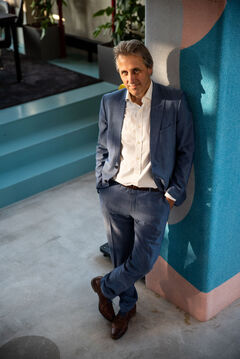
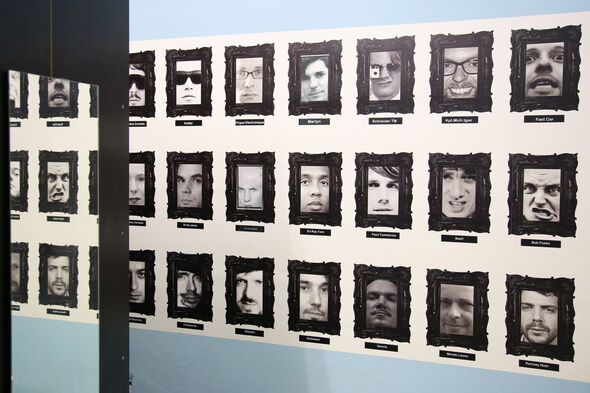
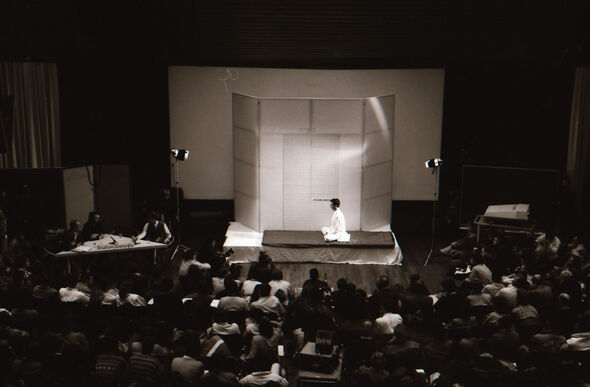
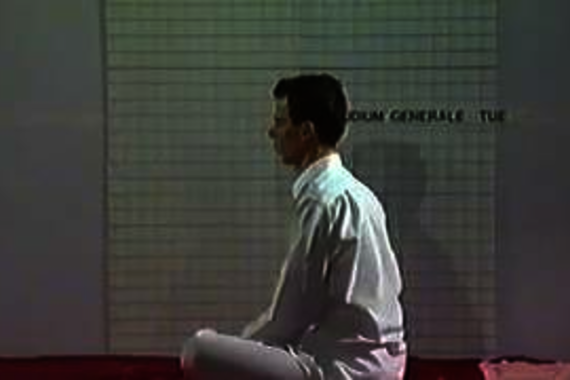
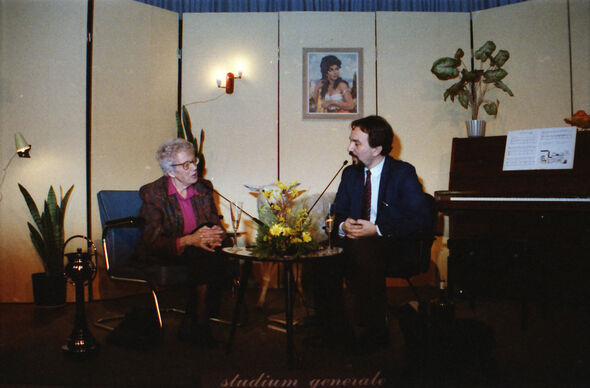
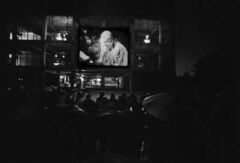
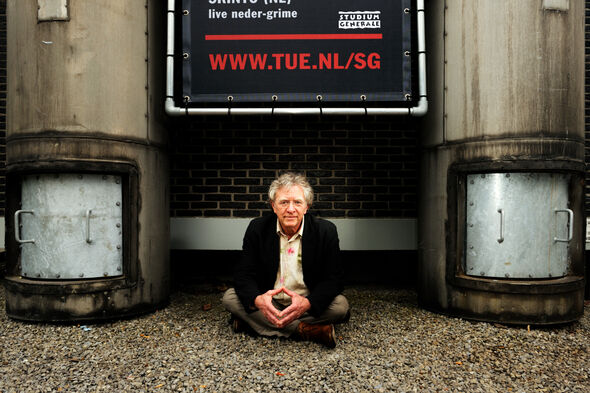
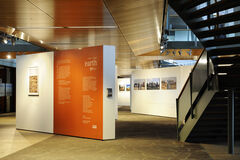

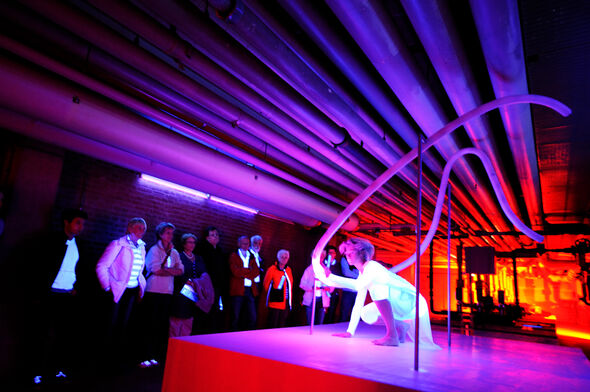
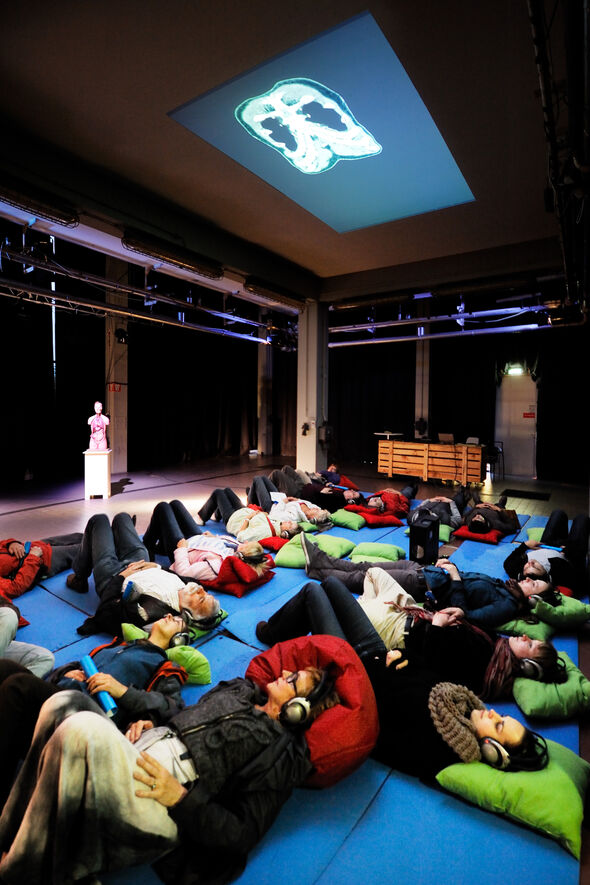
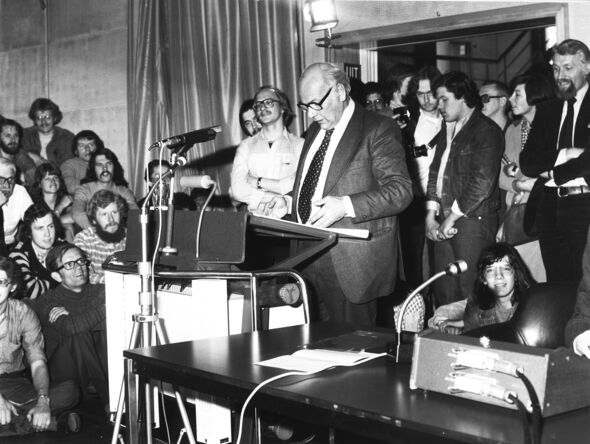
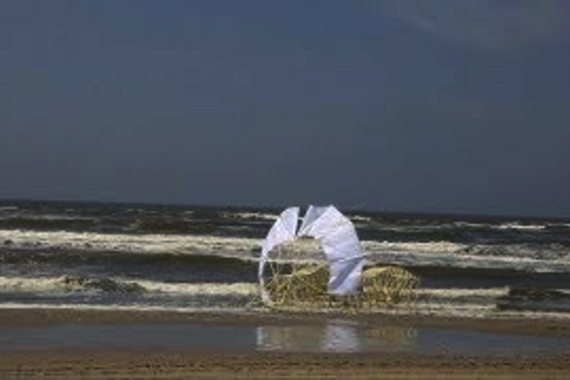
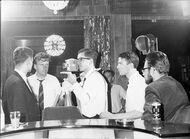
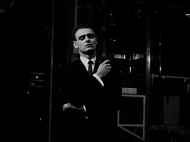
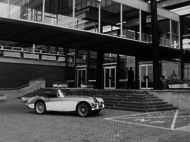
Discussion